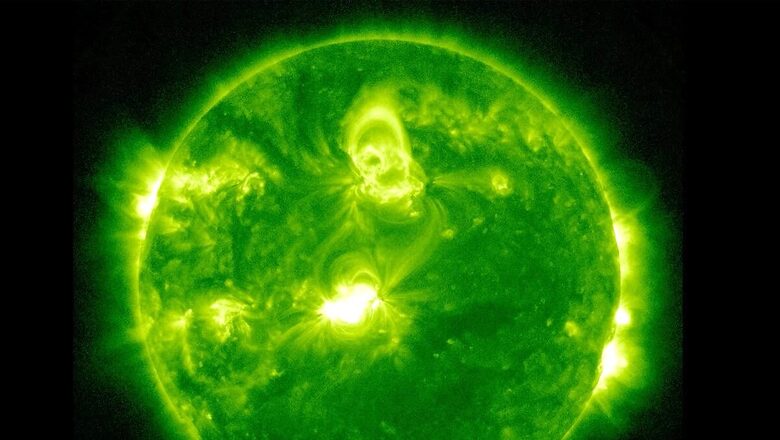
views
Earth faced its most powerful solar storm since 2017 on Sunday, causing a significant disruption in the planet’s magnetic field. The event led to a ‘major disturbance’ in infrastructure and enhanced the visibility of the northern lights.
The US National Oceanic and Atmospheric Administration (NOAA) issued a geomagnetic storm watch on Saturday, predicting the impact of a Coronal Mass Ejection (CME) expected to last till Monday.
Despite the alert, NOAA reassured the public that there was no cause for concern. As of March 26, the weather forecaster reported weakening conditions but maintained the storm watch, anticipating a decrease from G3 to G1 storm levels.
“The G3 (Moderate) geomagnetic storm watch remains in effect. However, conditions are showing signs of weakening. G3 watch remains active until the end of the UT day, then lessening impacts expected to G1 (Minor) storm levels. Stay tuned to our website for updates and changes,” the US space weather forecaster said on a post on X Monday.
The G3 (Moderate) geomagnetic storm watch remains in effect. However, conditions are showing signs of weakening. G3 watch remains active until the end of the UT day, then lessening impacts expected to G1 (Minor) storm levels. Stay tuned to our website for updates and changes. pic.twitter.com/umLuq1aFCk— NOAA Space Weather Prediction Center (@NWSSWPC) March 25, 2024
Geomagnetic storms, also called solar storms, occur when large expulsions of plasma and magnetic fields from the sun’s atmosphere, like CMEs, disturb Earth’s magnetic field. The solar flare outburst could interfere with radio transmissions and enhance aurora viewing opportunities.
Following the solar storm, auroras appeared in the skies over Europe, New Zealand, and parts of the northern United States.
According to Space.com, the solar eruption occurred on March 22 at 9:45 p.m. EDT (0145 GMT on March 23), launching a powerful X-class solar flare and releasing a barrage of super-hot plasma toward Earth, known as a coronal mass ejection (CME). The impact reached our planet at 10:37 a.m. EDT (1437 GMT) on Sunday, March 24, triggering a severe G4-class geomagnetic storm, the strongest since 2017.
The US National Oceanic and Atmospheric Administration (NOAA) rates geomagnetic storms on a scale from G1 to G5, with G5 being the most extreme, capable of causing complete HF radio blackouts on the sunlit side of Earth.
Solar activity follows an 11-year cycle, with the geomagnetic storm on Sunday being one of several expected during this period. During solar minimum, which occurred a few years ago, geomagnetic storms can occur less frequently.
Such storms may disrupt high-frequency radio transmissions and satellite tracking but are typically manageable for power grids and aircraft communications, with most commercial aircraft equipped with satellite transmission backup, Jonathan Lash, a forecaster told Associate Press.
Satellite operators might have trouble tracking their spacecraft, and power grids could also see some “induced current” in their lines, though nothing they can’t handle, he said.


















Comments
0 comment